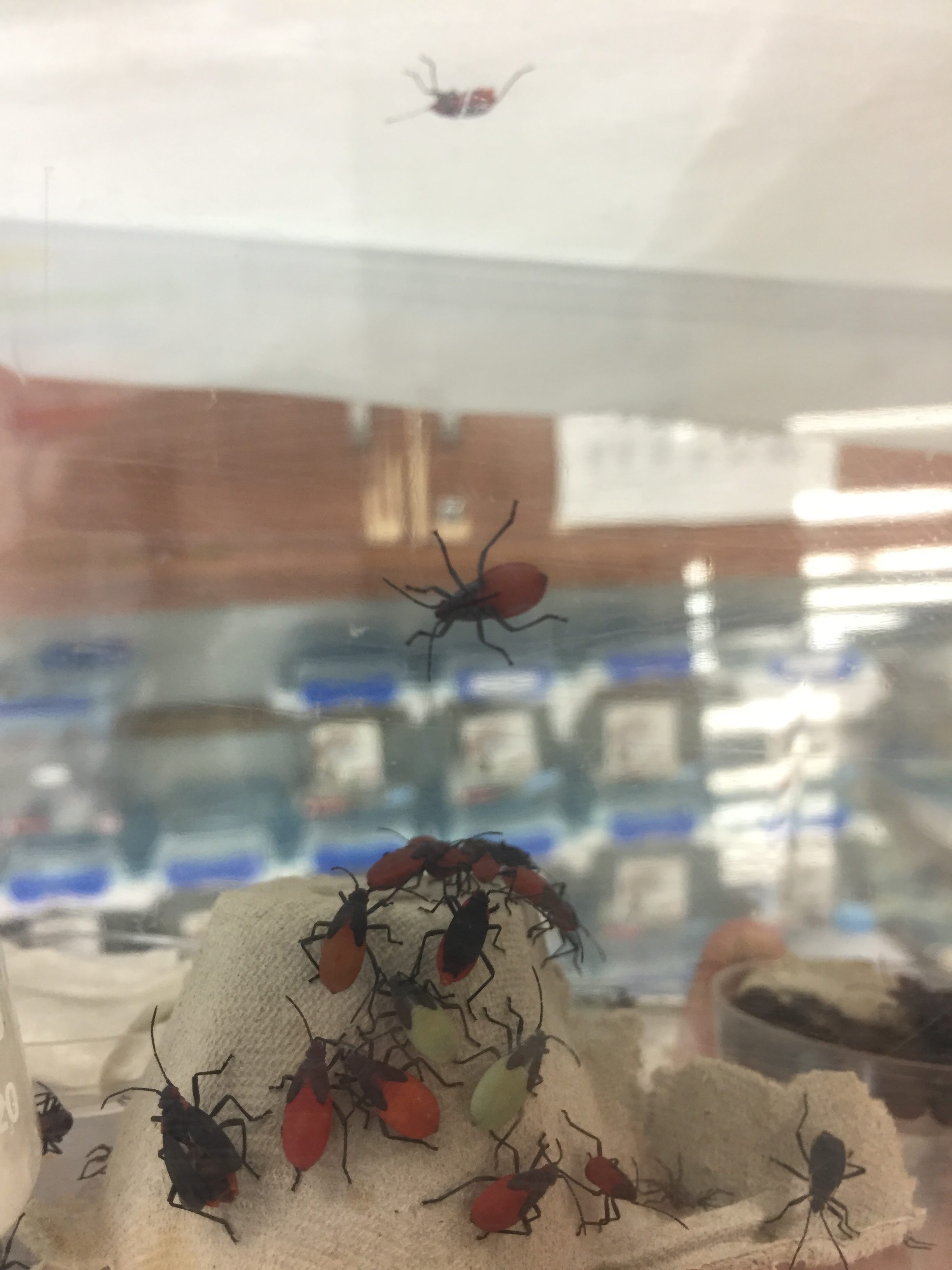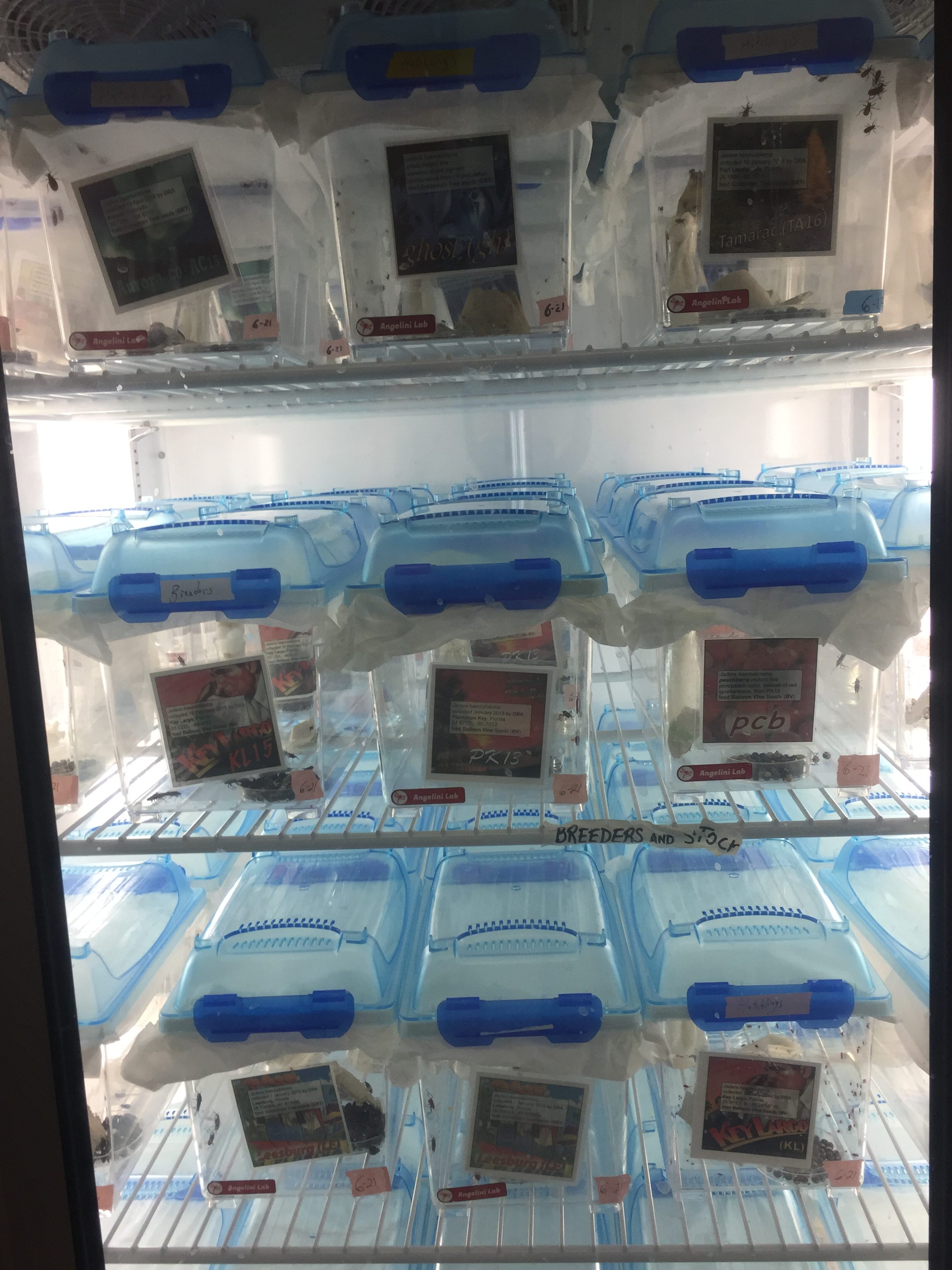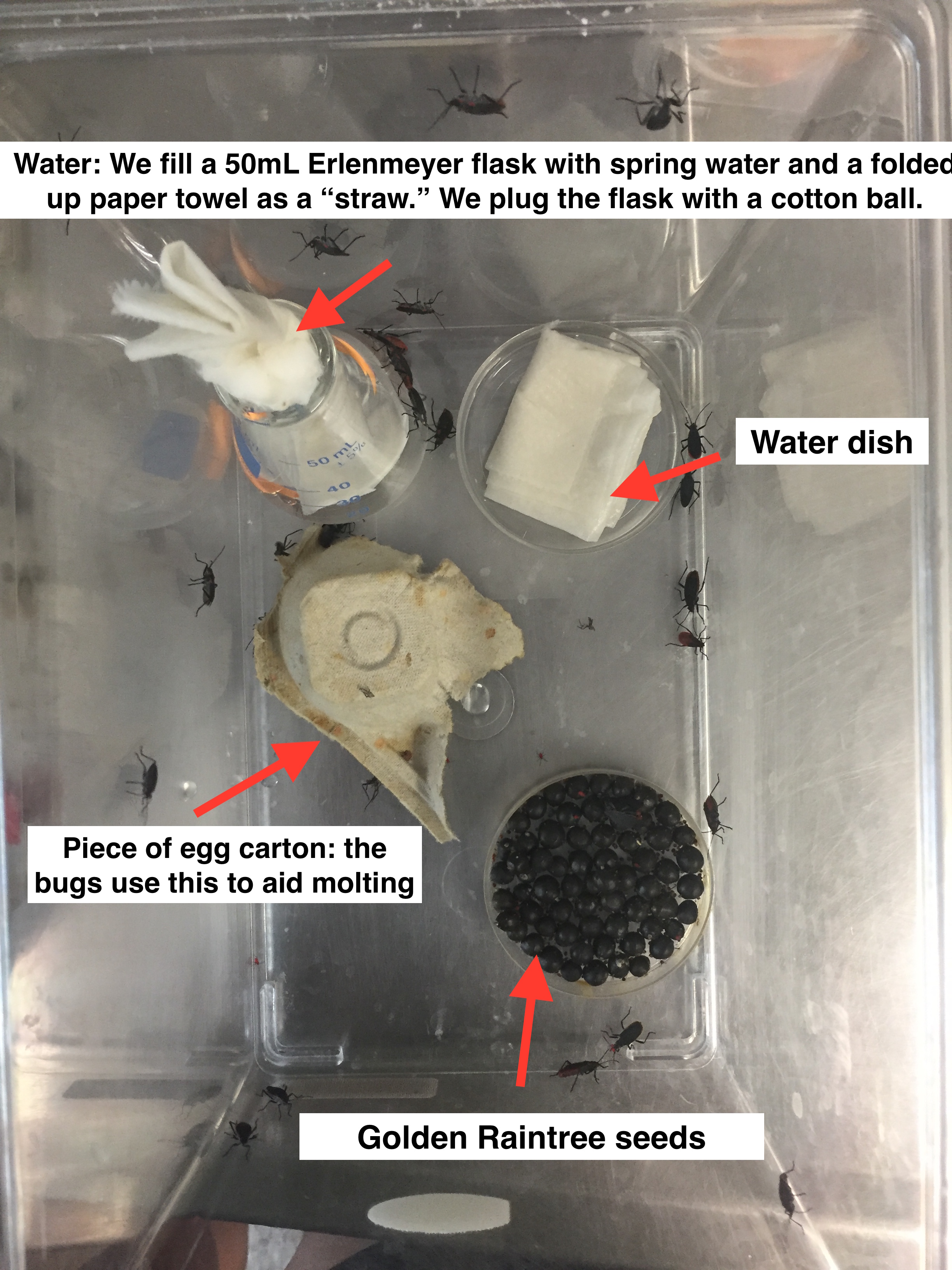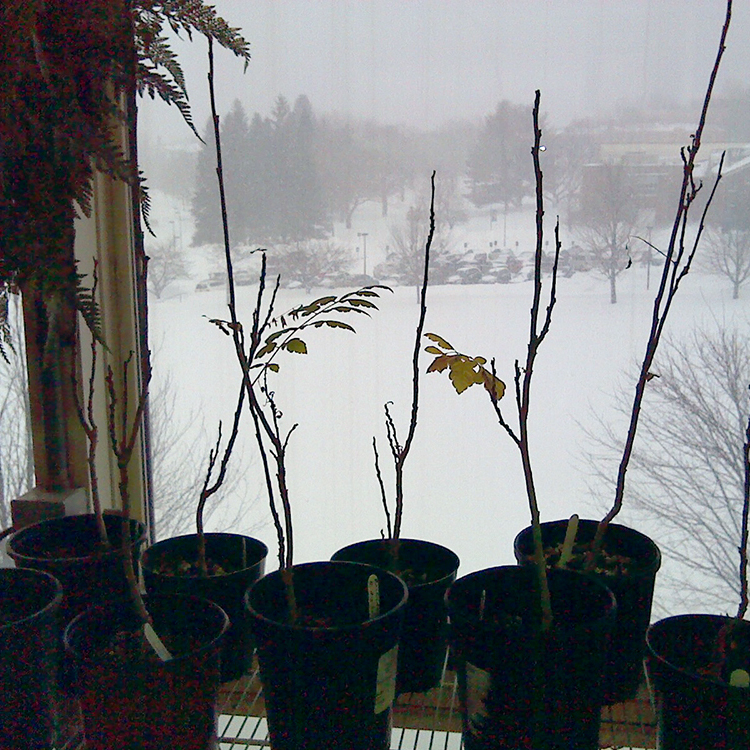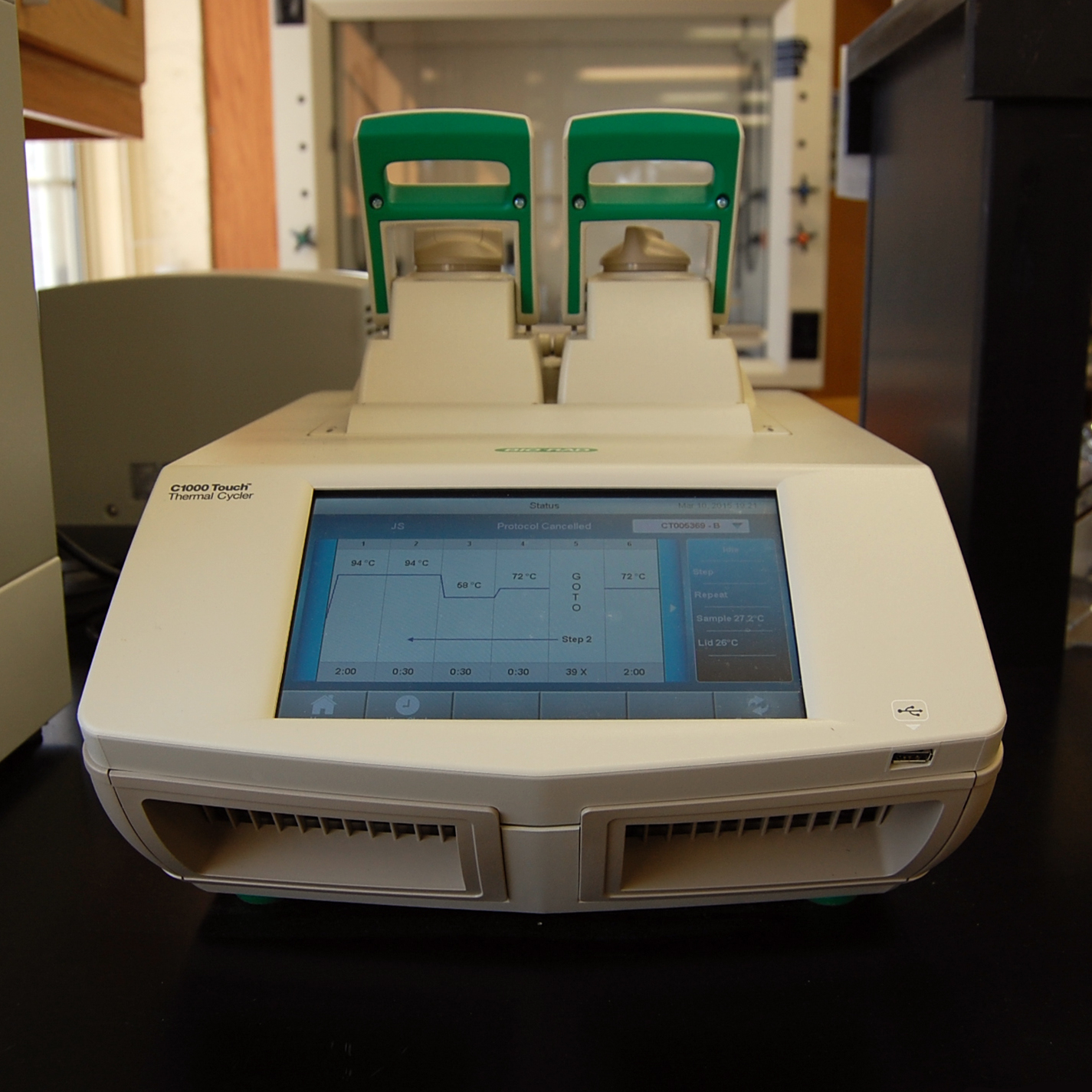The Bugs in our Backyard project is run by Dave Angelini and his lab members at Colby College in Waterville, Maine. This post will give you a brief tour of the lab and how we keep the bugs! This summer students and researchers are hard at work on questions of insect development and molecular genetics. In one section of the lab, we keep collections of two kinds of bugs, milkweed bugs (Oncopeltus fasciatus) and soapberry bugs (Jadera haematoloma). This room also has equipment for observing the bugs and conducting experiments with them.
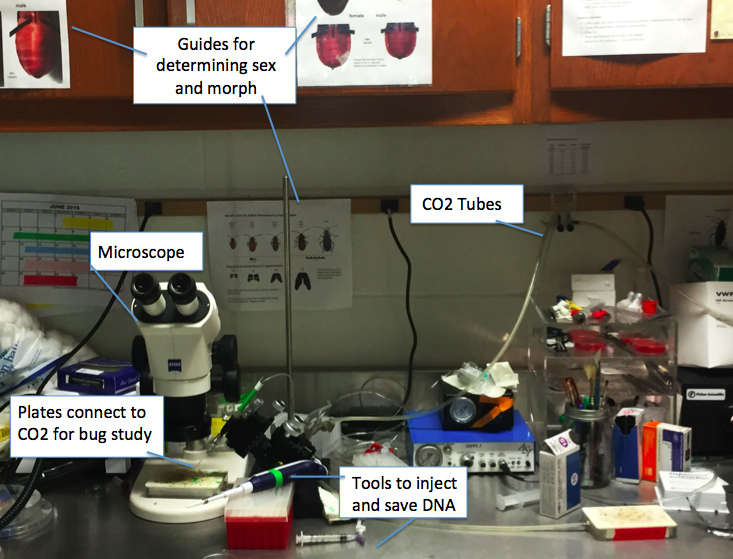
Photo and Labels by Maggie McKeon, July 2016
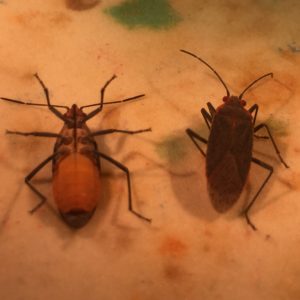
The Angelini Lab works mostly with two species of true bugs. On the counter, we have a collection of milkweed bugs (Oncopeltus fasciatus). Each habitat has a small Erlenmeyer flask of water with a paper towel as a kind of straw, a water dish, and a dish of sunflower seeds. We also give them a fluffed cotton ball to lay their eggs in. They can live out on the counter because they are used to typical room temperatures.
The soapberry bugs, however, live in an incubator set to approximate the climate of Florida and the Gulf Coast. We have several collections of soapberry bugs (Jadera haematoloma). Dave and some of his students have collected them from different places, from Maryland to Florida to Colorado. Each caged habitat is labeled with the collection location, the date, and the age of the bugs it contains.
In each soapberry bug cage, we also put an Erlenmeyer flask of water and a water dish. Soapberry bugs eat specific seeds, depending on where they were collected. Some feed off of balloon vine seeds, while others have evolved to feed on seeds of the decorative golden rain tree. The “why” and “how” they switched feeding hosts is one of the many topics we are studying.

